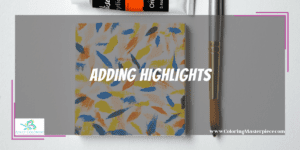Minis serve a variety of purposes. For D&D players they can help visualize different aspects of gameplay, and you can also find them in other tabletop games like Warhammer, Malifaux, or Dreadball. While you can purchase minis already painted, learning how to paint them yourself can submerge you deeper into the story.
Gathering Your Equipment

If you want to purchase a kit for mini painting then that can help you out in the long run, but most of the supplies you need to get started you might already have. These include:
- A brush with a fine tip for details and highlights
- A small brush for smaller areas
- A larger brush for base coats and/or washes
- A stiff-bristled brush for dry brushing
You should also have a palette or non-porous surface for thinning out the paint. This can be as simple as a ceramic tile, a plastic lid, or a wet palette.
You also need enough paint to cover the major parts of your scheme, like skin, armor, cloth, and any metals. Try to keep your colors simple to start; color choice can get overwhelming, and you want to keep stress low when starting.
You can also employ a black or white model primer, but the spray paint works fine in a pinch. This provides a good base for your other colors to hold on to, and it can help you cover areas that are hard to reach with a brush.
Prepping and Priming Your Mini
If you have not clipped your mini back from the sprue yet then take the time to do that. Use a craft knife to trim off any mold lines or imperfections from the clipping, and then put the pieces together. If your mini is not push-fit then you should use poly cement to hold the pieces together. Some pieces, like anything metal, may require super glue to secure them, but polycement works well with most plastics.
Once everything is pieced together you need to spray the mini with primer or spray paint to prepare the surface. Using black is standard because it requires less work, especially when trying to get into hard-to-reach areas. You can use gray or white if you want to use brighter colors and worry about the black dulling them. After you prime the mini with a thin, even coat let it dry for about 30 minutes before checking it. You can touch up the model and repeat the process as needed but try to keep this layer as thin as possible.
Just starting in coloring? Here are some supplies you’ll need!
Applying Your Basecoat
Your basecoat is made up of the basic overall colors you need in the piece. These are flat, so do not worry about finding different shades of each color to add dimensions. At least, not yet. Most paint needs to be thinned out before you use it to paint minis. Add a bit of water to create a consistency between water and paint, and start small. Take your time getting this part right. Once you have the consistency figured out you can move to paint layers on your mini. These should be thin and even. You might think that your first layer is too transparent, but this is what you want. Trust the process.
It is easier to manage color when you are working with two or three thin layers than it is with one thick layer. By layering colors, you can paint over any mistakes you make and stop yourself before you add too much. When all the colorful parts of your mini have their bright base you can let it dry. Some will stop at this point, satisfied with the colors and overall appearance of their mini, but most go on to add depth and details.
Shading to Add Depth
The most important thing to remember when you are adding depth to your mind is that light does not present itself accurately on a miniature model. Instead, you need to pay attention to the form itself. The recessed areas tell you where you need to create shadows.
To add depth you need to create shade paints. You can get these premade, but you can also dilute a darker paint you have with water to create that wash. If you want to mix your own then consider adding a contrasting color to the original color. In these cases, using black for depth is not an accurate portrayal of a shadow. Using a color wheel to find the color opposite the original will show you what color you can mix to create an authentic shadow color.
When shading, pay attention to areas that are naturally shadowed, such as:
- Folds in clothing
- Joints (in bodies and armor)
- Any nooks on the model
Leave flat areas alone so they can keep the original brightness of the piece. If they need more work you can come back and fix it in the end.
Tidying Up the Piece
After you add your shadows you should go over the areas with a wash in the original color. This additional layer helps build color on the flat planes and creates consistency between the two areas. At this point, you can also add a brighter layer in raised areas if you want to do the extra prep work for highlights you might add.
Adding Highlights

For highlight colors, you can use a lighter premade color, but mixing can help you stay consistent with the original. To create your own you can mix white paint in with your base coat or another color you want to use. It is worth pointing out that mixing white paint with metallics will flatten them. In most cases, you can use silver to brighten gold, and you can usually find brighter metallics than what you might use for a base.
Highlight edges to simulate the reflection of light. When you are highlighting you need to pay more attention to what you are painting. Look for areas like:
- Ridges of clothing, especially higher-up
- Ridges in the armor
- Areas on the top that would be hit with overhead light
- Hair at the top of the head/helmets/hats
Using the edge of your paintbrush will give you better control than using the tip. Take your time; going slow can save you time in the long run.
If you have areas that involve texture, like rocks, fur, or wood, you can use dry brushing to create a lighter highlighting effect. This is where your stiff bristle brush comes in handy. Add your highlighting paint to the brush and then work it in by wiping the brush on a porous surface like cloth or cardboard. When the brush is hesitant to leave any paint behind, it is ready to use for dry brushing.
At this point, you dust the brush over the areas you are painting, and the brush will catch the textured edges of these areas. Be careful when using around finished areas like the body, and make sure you add these textured before details you want to stand out.
Finishing with Details
The details should usually come last. Adding them in before puts them in a position to be disturbed by shading and texturing, and you are likely to find yourself going over them in the end anyway. Not everything needs to be emphasized in this step. Some details can be left alone, while others may be important to go over. Most of the time you want the face to be the focal point, so make sure any changes you make do not take away from that.
Paint used for details does not need to be diluted like your washes, but you can start with diluted colors to test things out. Using a color wheel will also help you identify contrasting colors to make these areas pop. Let the piece dry completely and then you can go in and touch up any areas that need it one last time.
Maximize the benefits of coloring with my free adult coloring eBook and by signing up for my email newsletter HERE!
Disclaimer: The information provided by ColoringMasterpiece.com (“The Site”) is for general informational purposes only. All information on the Site is provided in good faith, however, we make no representation or warranty of any kind, express or implied, regarding the accuracy, adequacy, validity, reliability, availability, or completeness of any information on the Site. Under no circumstance shall we have any liability to you for any loss or damage of any kind incurred as a result of the use of the Site or Reliance on any information provided on the Site. Your use of the Site and your reliance on any information on the Site is solely at your own risk. This blog post is for educational purposes only and does not constitute legal advice. Please consult a legal expert to address your specific needs.
Terms and Conditions: https://coloringmasterpiece.com/terms-and-conditions/
